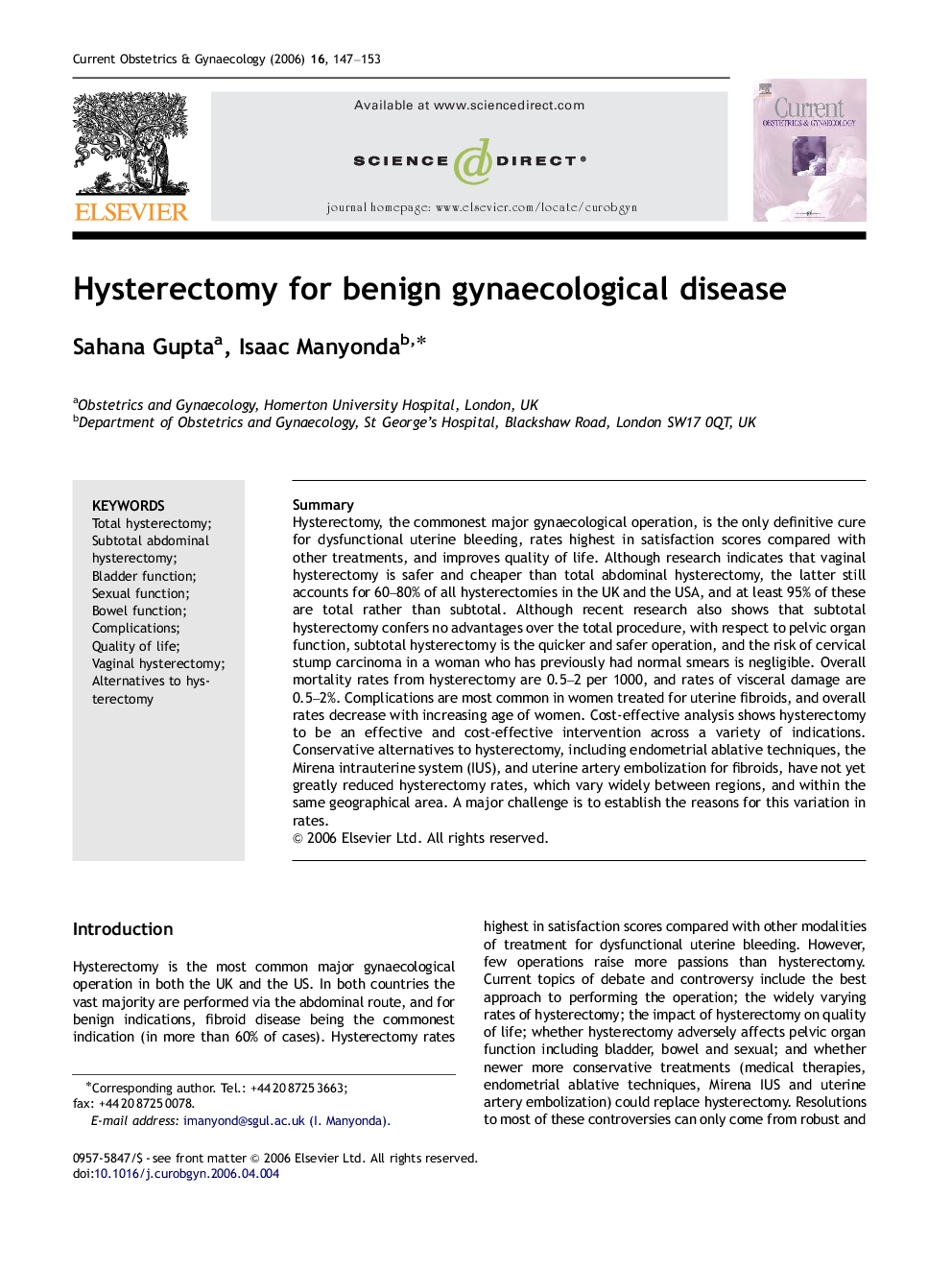| Article ID | Journal | Published Year | Pages | File Type |
|---|---|---|---|---|
| 3916297 | Current Obstetrics & Gynaecology | 2006 | 7 Pages |
SummaryHysterectomy, the commonest major gynaecological operation, is the only definitive cure for dysfunctional uterine bleeding, rates highest in satisfaction scores compared with other treatments, and improves quality of life. Although research indicates that vaginal hysterectomy is safer and cheaper than total abdominal hysterectomy, the latter still accounts for 60–80% of all hysterectomies in the UK and the USA, and at least 95% of these are total rather than subtotal. Although recent research also shows that subtotal hysterectomy confers no advantages over the total procedure, with respect to pelvic organ function, subtotal hysterectomy is the quicker and safer operation, and the risk of cervical stump carcinoma in a woman who has previously had normal smears is negligible. Overall mortality rates from hysterectomy are 0.5–2 per 1000, and rates of visceral damage are 0.5–2%. Complications are most common in women treated for uterine fibroids, and overall rates decrease with increasing age of women. Cost-effective analysis shows hysterectomy to be an effective and cost-effective intervention across a variety of indications. Conservative alternatives to hysterectomy, including endometrial ablative techniques, the Mirena intrauterine system (IUS), and uterine artery embolization for fibroids, have not yet greatly reduced hysterectomy rates, which vary widely between regions, and within the same geographical area. A major challenge is to establish the reasons for this variation in rates.
